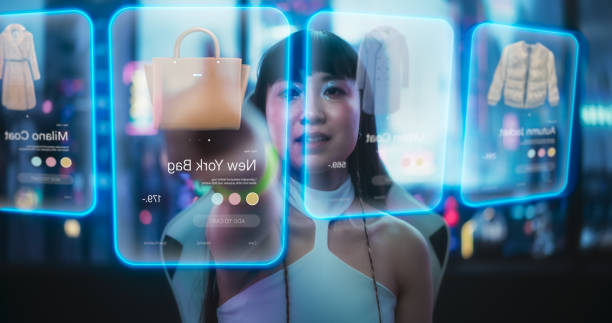
Augmented Reality (AR) is revolutionizing online shopping, bridging the gap between digital browsing and in-store experiences. With AR, customers can visualize products in real-world settings before purchasing, making online shopping more interactive, immersive, and reliable. From virtual try-ons to 3D product previews, AR is transforming e-commerce by reducing return rates, enhancing customer satisfaction, and boosting sales.
In this article, we will explore how businesses can use AR to improve online shopping, its benefits, and how it is shaping the future of e-commerce.
What is Augmented Reality (AR)?
Augmented Reality (AR) overlays digital elements—such as images, animations, and 3D models—onto the real world using smartphones, tablets, or AR glasses. Unlike Virtual Reality (VR), which immerses users in a completely digital environment, AR enhances real-world experiences by adding interactive visual elements.
For online shopping, AR allows customers to:
- Try on clothes, accessories, or makeup virtually
- See how furniture or home décor fits into their space
- Preview products in 3D for a better understanding of size, design, and functionality
By integrating AR, e-commerce stores can provide a more engaging and personalized shopping experience.
Benefits of AR in Online Shopping
1. Enhancing Customer Engagement
AR creates an interactive shopping experience, keeping customers engaged longer on e-commerce sites. When shoppers can virtually interact with products, they feel more confident in their purchasing decisions.
2. Reducing Return Rates
One of the biggest challenges in online shopping is high return rates due to products not meeting customer expectations. AR minimizes this issue by allowing customers to visualize products accurately before purchasing. For example, IKEA’s AR app lets customers place furniture in their homes to see if it fits and matches their interior design.
3. Boosting Sales and Conversions
A better shopping experience leads to increased sales. According to research, AR experiences can increase conversion rates by up to 40%. When customers can try before they buy, they are more likely to complete their purchase.
4. Building Customer Confidence
Many online shoppers hesitate to buy products because they are unsure how they will look or function in real life. AR eliminates this uncertainty by offering realistic previews, making shoppers more confident in their purchases.
5. Personalizing the Shopping Experience
AR enables businesses to offer customized experiences tailored to individual preferences. For example, beauty brands like Sephora use AR to allow customers to try on different makeup shades, helping them choose the best fit for their skin tone.
How to Implement AR in Online Shopping
1. Use AR for Virtual Try-Ons
Retailers in the fashion, beauty, and accessories industry can benefit from AR-powered virtual try-ons. Brands like Warby Parker and L’Oréal use AR to let customers see how glasses or makeup products look on their faces before purchasing.
2. Provide 3D Product Previews
Instead of displaying static images, e-commerce stores can integrate AR-based 3D previews to give customers a 360-degree view of products. This is especially useful for gadgets, furniture, and automobiles, where customers need a detailed visual representation.
3. Incorporate AR in Shopping Apps
Retailers can integrate AR features within their mobile shopping apps, enabling customers to visualize products in real-time using their smartphone cameras. Brands like Nike and Adidas use AR in their apps to help customers find the right shoe size and fit.
4. Enable AR in Web Browsers
Many e-commerce businesses now use WebAR, which allows customers to access AR features directly from their web browser without needing to install an app. This makes AR shopping experiences more accessible.
5. Use AR for Home Décor and Furniture Shopping
Brands like Wayfair and IKEA have transformed furniture shopping by allowing customers to place digital models of furniture items in their homes using AR. This feature helps buyers make informed decisions about size, style, and placement.
6. Enhance In-Store Experiences with AR
Even for businesses with physical stores, AR can enhance the shopping experience. Customers can use AR apps to scan products and receive additional information, reviews, and customization options.
The Future of AR in E-Commerce
AR is not just a trend—it is the future of online shopping. As technology advances, AR shopping experiences will become even more seamless and realistic. Some future developments include:
- AI-powered AR recommendations – AI will analyze customer preferences and suggest products through AR.
- AR-powered social commerce – Social media platforms will integrate AR shopping features to allow users to try on and purchase products directly within apps.
- Metaverse shopping experiences – Virtual shopping malls in the metaverse will offer immersive AR-powered shopping experiences.
Conclusion
Augmented Reality is reshaping online shopping by making it more interactive, immersive, and customer-friendly. Businesses that adopt AR technology can enhance engagement, reduce return rates, and increase sales by providing a more personalized shopping experience. Whether through virtual try-ons, 3D previews, or AR-enabled apps, the future of e-commerce is undoubtedly AR-driven.
As online shopping evolves, staying ahead with innovative technologies like AR is crucial for success. If you found this article insightful, be sure to check out our next post, where we dive into “How AI Is Revolutionizing E-Commerce.” Stay tuned for more exciting tech insights at TechAfri!

